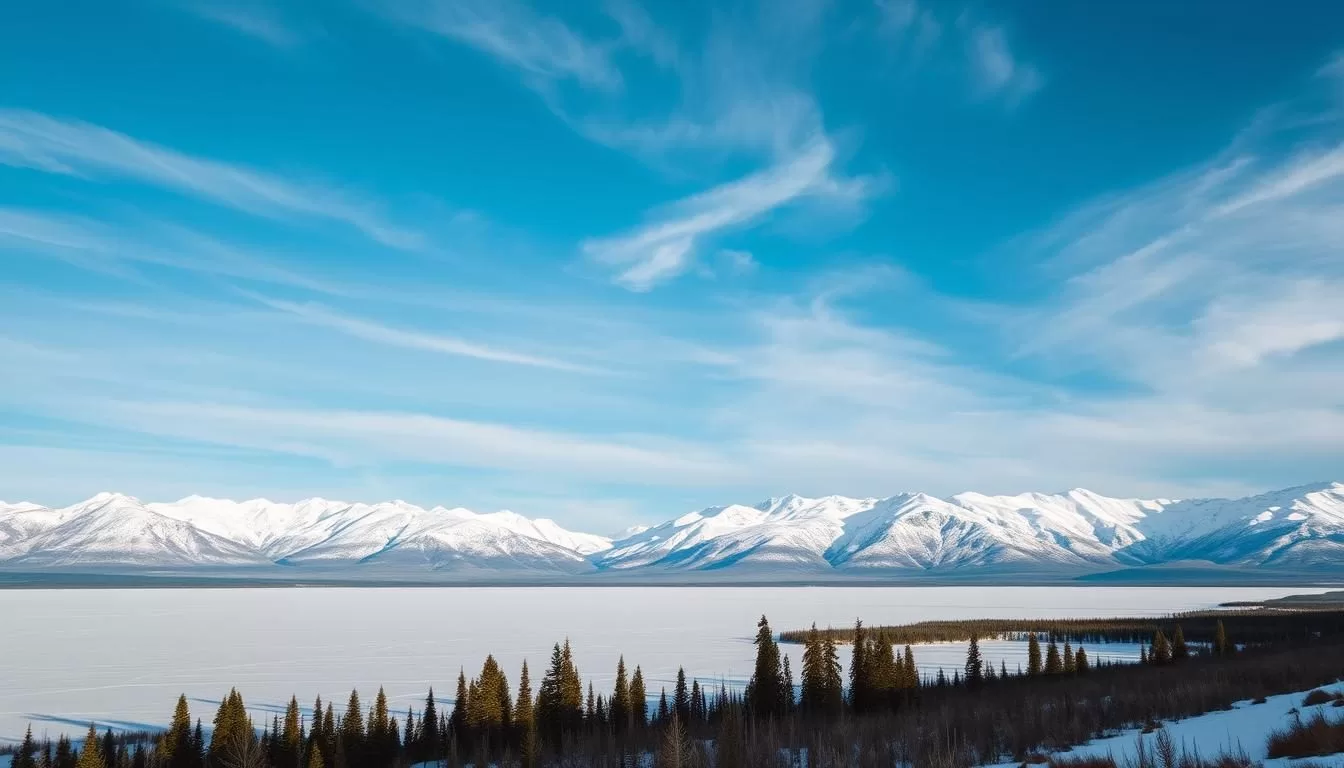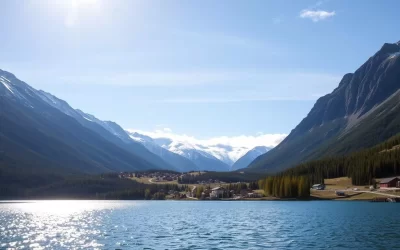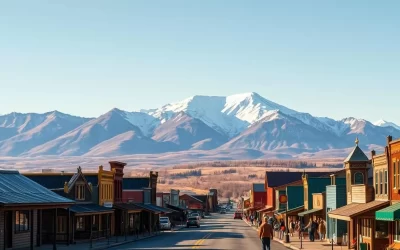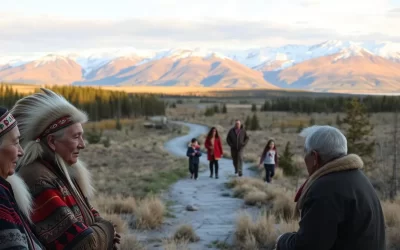✓ Accommodations✓ Flights✓ Rental Cars
Nestled in Canada’s northwest corner, the vast territory of Yukon spans over 480,000 square kilometers. You’re about to embark on an adventure in one of North America’s most breathtaking regions.
The weather and climate here are surprisingly diverse, varying greatly from one area to another and from season to season. To make the most of your trip, understanding the local climate cycles is crucial.
Each season offers a unique experience, from the magical Northern Lights to the endless daylight of summer. Planning your visit according to what you want to experience is key to a successful trip.
Understanding Yukon’s Unique Climate
Yukon’s climate is a fascinating mix of extremes, offering experiences that range from the midnight sun to the spectacular display of the northern lights. This territory is known for its diverse and extreme climate conditions.
The Land of Extremes: From Midnight Sun to Northern Lights
The territory’s northern latitude creates the perfect conditions for viewing the northern lights during winter months and experiencing the phenomenon of the midnight sun in summer. You’ll experience some of North America’s most extreme seasonal variations in Yukon.
How Geography Shapes Yukon’s Weather Patterns
Yukon’s weather patterns are influenced by its mountainous geography, with the Coast Mountains creating rain shadows that affect temperatures and precipitation throughout the region. This unique geography contributes to the varied light conditions and diverse weather across different places in Yukon.
Spring in Yukon: Nature’s Awakening (March-May)
As winter’s chill begins to dissipate, Yukon bursts into life with the arrival of spring. This season brings a dramatic transformation, as the landscape shifts from snow-covered terrains to vibrant landscapes teeming with life.
March: Perfect for Late-Season Winter Activities
In March, you can enjoy late-season winter activities like snowshoeing, cross-country skiing, and ice fishing under increasingly comfortable temperature conditions.
April-May: Witnessing Wildlife Emerge
As spring progresses, April and May bring excellent wildlife viewing opportunities. Witness the emergence of wildlife from hibernation and the return of migratory birds.
Spring Weather Expectations and Packing Tips
The northern lights are visible until mid-April. Pack layers for your visit, as temperature fluctuations can be significant, with daytime highs reaching 10°C (50°F) and nights still dipping below freezing.
| Month | Weather | Activities |
|---|---|---|
| March | Cold, with warming temperatures | Snowshoeing, cross-country skiing, ice fishing |
| April | Spring melt begins, temperatures rise | Wildlife viewing, northern lights viewing |
| May | Temperatures continue to climb | Observing green shoots and wildflowers |
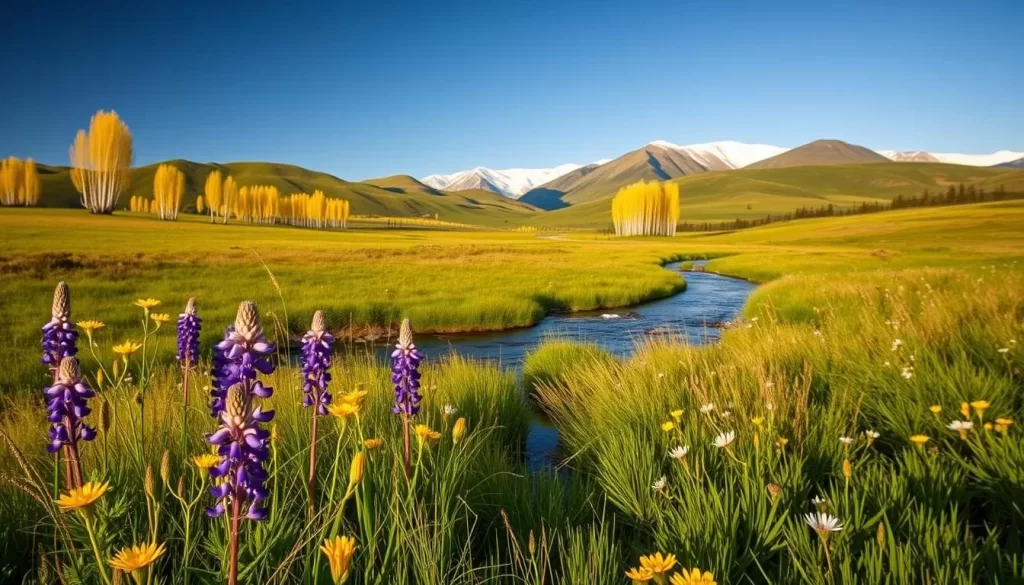
Summer in Yukon: Land of the Midnight Sun (June-July)
The Yukon’s summer, particularly June and July, is characterized by the magical midnight sun phenomenon. During this period, the region experiences around 21 hours of daylight, allowing you to pack your days with various activities like flightseeing, fishing, and mountain biking.
Peak Season Benefits
June and July are considered peak season in the Yukon, offering you the best conditions for outdoor adventures. You’ll enjoy extended daylight hours, making it ideal for hiking, paddling, and exploring the wilderness.
Summer Temperatures and Daylight Hours
Summer temperatures in the Yukon typically range from 15-30°C (59-86°F), providing a comfortable climate for your outdoor escapades. With the midnight sun, you can make the most of your day, from morning wildlife viewing to evening paddling on crystal-clear lakes.
Dealing with Summer Insects in Yukon
While mosquitoes can be present during the summer months, they’re manageable with proper repellent. You can minimize encounters with mosquitoes by staying in breezy areas or higher elevations.
| Activity | June | July |
|---|---|---|
| Hiking | Accessible trails | Alpine wildflowers in bloom |
| Fishing | Abundant fish populations | Optimal water conditions |
| Wildlife Viewing | Morning and evening sightings | Active wildlife during the day |
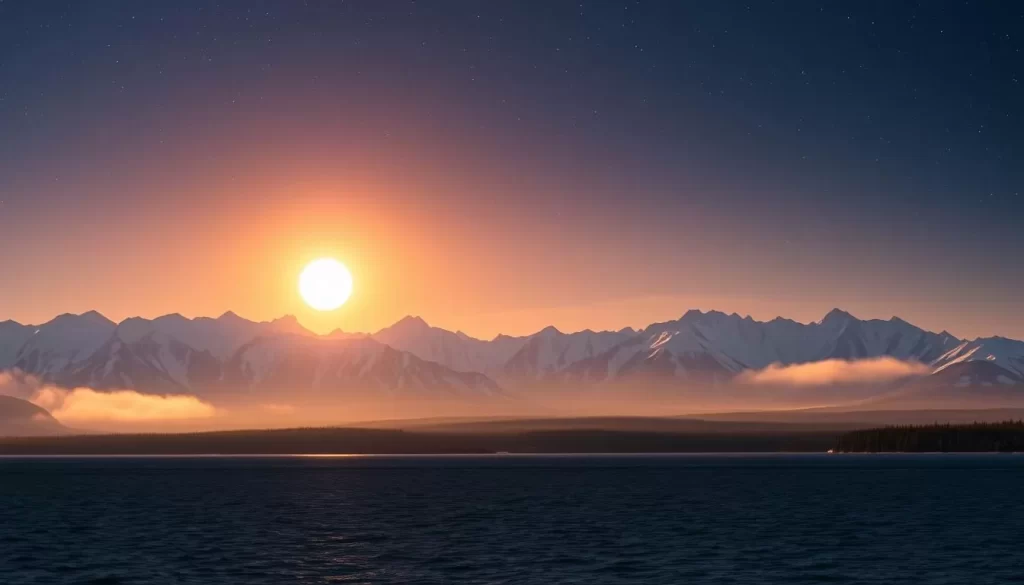
Fall in Yukon: A Photographer’s Paradise (August-September)
Yukon’s fall season is a photographer’s dream, with the landscape erupting in a kaleidoscope of colors. As the summer warmth dissipates, the territory transforms into a vibrant canvas, offering endless opportunities for capturing stunning images.
August: Transition Month with Mild Weather
August is a transition month in Yukon, with temperatures gradually cooling down. You can still enjoy hiking and outdoor activities without the summer crowds, making it an ideal time to explore the territory’s vast wilderness.
September: Prime Time for Fall Colors
September is the prime time to witness Yukon’s spectacular fall colors. The mountains turn into blankets of red, orange, and green, creating a breathtaking scenery. For the best experience, head north to Tombstone Territorial Park and then south towards Whitehorse.
Early Northern Lights Viewing Opportunities
As the nights grow darker, September offers early opportunities to view the northern lights. The fall season provides a comfortable balance between daytime temperatures and cool nights, making it perfect for hiking and viewing the northern lights without the extreme cold.
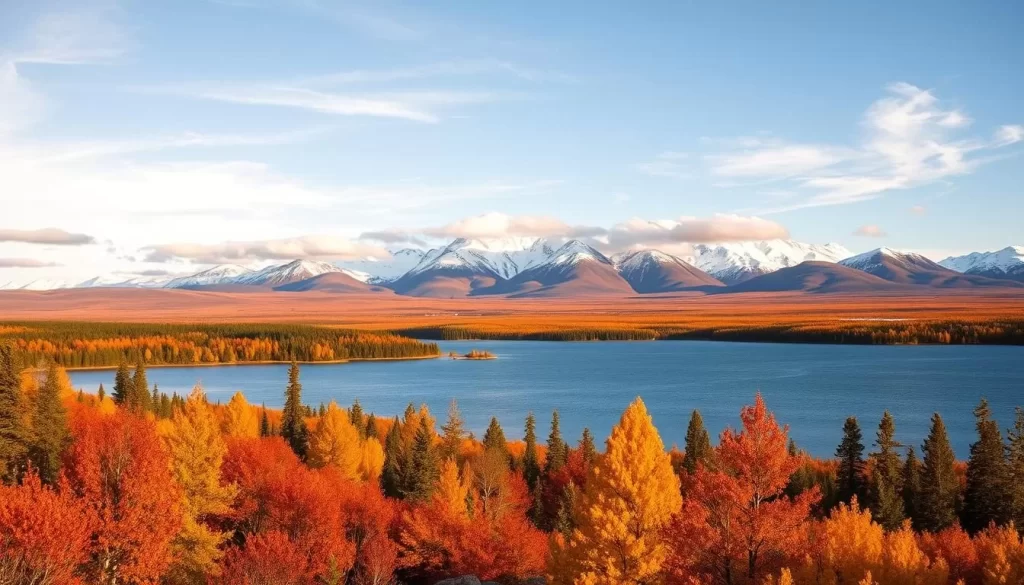
Winter in Yukon: Embracing the Cold (October-February)
Yukon’s winter season, spanning from October to February, is a period of breathtaking beauty and adventure. During this time, the territory transforms into a snowy landscape, offering a wide range of activities and experiences.
The True Arctic Experience
From November to February, you’ll experience the true Arctic, with snow typically arriving by October and creating a winter wonderland that lasts through February. Temperatures range from -10°C to -15°C, with occasional cold snaps.
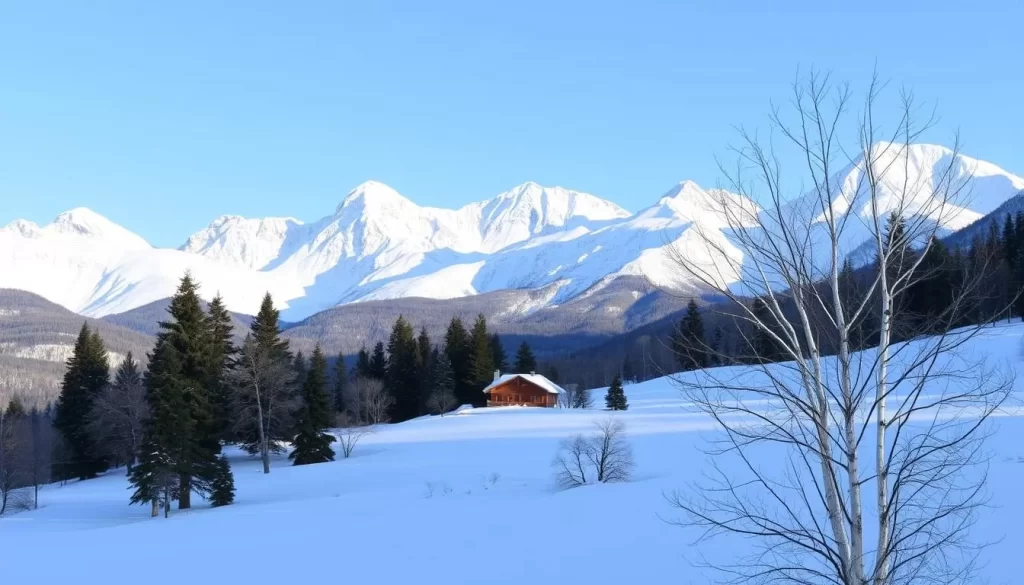
Winter Activities and Festivals
Winter in Yukon is filled with exciting activities, including dogsledding, snowmobiling, ice fishing, and snowshoeing. You can also attend unique northern festivals like the Yukon Quest sled dog race, making the most of the long winter nights.
Preparing for Extreme Cold and Limited Daylight
To make the most of your winter trip, it’s essential to prepare for the extreme cold and limited daylight. Pack warm clothing, and be aware that December offers just 4-6 hours of daylight, creating a dramatic contrast to summer’s midnight sun.
Regional Weather Variations Across Yukon
As you travel across Yukon, you’ll notice significant changes in weather patterns. The territory’s diverse geography leads to varied climate conditions across different regions.
Mild Capital City
Whitehorse, being the capital and largest city, has a relatively mild climate due to its rain shadow location near the Coast Mountains. This results in drier conditions compared to other northern cities.
More Extreme Temperatures
Dawson City experiences more extreme temperature fluctuations. Winters are colder, averaging -20°C to -25°C, but summers are slightly warmer due to increased sunlight.
Mountain Weather Considerations
Kluane National Park, a UNESCO World Heritage Site, presents unique weather challenges. Its mountainous terrain means snow, freezing rain, and frost can occur year-round at higher elevations. Travellers should be prepared for abrupt weather changes.
Understanding these regional variations helps you plan your trip to Yukon more effectively, ensuring you’re prepared for the weather conditions you’ll encounter.
Best Months for Yukon, Canada: Best Months for a Weather-Savvy Trip
The best months to visit Yukon, Canada, vary depending on whether you’re chasing the Northern Lights, enjoying outdoor adventures, or witnessing fall colors. Understanding the optimal time for your preferred activities ensures a memorable trip.
For Northern Lights Chasers: September-April
If seeing the Northern Lights is on your bucket list, plan your trip between September and April. The best viewing times are during the shoulder season, specifically September-October and March-April, when temperatures are relatively milder.
For Outdoor Adventurers: June-August
Summer months (June to August) are ideal for hiking, paddling, fishing, and wildlife viewing. The long daylight hours and comfortable temperatures make it perfect for outdoor enthusiasts to enjoy the vast wilderness of Yukon.
For Fall Color Enthusiasts: Mid-August to October
For those who appreciate fall colors, the best time to visit Yukon is from mid-August to early October. The peak color season typically occurs in mid-September, starting in the north and gradually moving south.
| Activity | Best Time | Highlights |
|---|---|---|
| Northern Lights | September-April | Best viewing during shoulder seasons (September-October, March-April) |
| Outdoor Adventures | June-August | Long daylight hours, comfortable temperatures for hiking, paddling, fishing |
| Fall Colors | Mid-August to October | Peak colors in mid-September, starting in the north |
Conclusion: Planning Your Perfect Yukon Adventure
Yukon’s diverse weather patterns make it an attractive destination for those seeking a wild and unforgettable experience. You can now plan your trip according to your preferences, whether that’s witnessing the northern lights, enjoying summer activities like hiking, or marveling at the fall colors.
Remember to pack layers, as the weather can change rapidly. With its unique light conditions and varied landscapes, Yukon offers breathtaking experiences year-round. Time your visit right, and you’ll have a golden adventure, whether that’s in the sun-drenched days of summer or the vibrant hues of fall.
The above is subject to change.
Check back often to TRAVEL.COM for the latest travel tips and deals.
